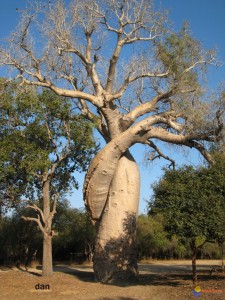Seniors Marvel At The Avenue of the Baobabs
The Avenue (or Alley) of the Baobabs is located on the island country of Madagascar in Africa. Senior travelers may have heard the tree affectionately referred to as the upside-down tree, but it is also known as the boab, boaboa and bottle tree.
“Baobab” is the common label given to the Adansonia genus which contains eight tree species. The trees are known locally as ‘renala’, which is Malagasy for ‘mother of the forest’. The trees line the dirt road between Morondava and Belon’i Tsiribihina in the Menabe region in western Madagascar.
Its striking landscape draws senior travelers from around the world, making it one of the most visited locations in the region. It has been a center of local conservation efforts, and was granted temporary protected status in July 2007 by the Ministry of Environment, Water and Forests, the first step toward making it Madagascar’s first natural monument.
The Baobabs can live up to 800 years and reach heights of 98 feet (30 m). The diameter of the larger trees can reach up to 36 feet (11 m) and the circumference can be up to 160 feet (50 m) around. The trees are a legacy of the dense tropical forests that once thrived on Madagascar.
The trees did not originally tower in isolation over the sere landscape of scrub but stood in dense forest. There are more than a dozen baobabs along the avenue. Visitors can find tours to this site out of Morondava, a city just 45 minutes south.
Seniors Discover a New ‘Unique and Magnificent’
The unique formation and size of the baobab tree is dramatic and captivating. Though baobabs can be seen all around the country, this particular route is especially striking… the entire dirt road is lined with these magnificent trees, and at sundown, they are even more magnificent.
Some call them ‘roots of the sky’ because when the trees are without leaves they look like roots…big trees planted in the ground upside down, with the roots in the sky.
The baobabs of Madagascar have to be seen to be believed. Of eight baobab species in the world, six are endemic to Madagascar; one other is found in Africa and another in Australia.
This indicates that Madagascar is the country in which baobab trees first originated, and the other two species migrated across the ocean and followed a different evolutionary chain.
Often called the “Tree of Life,” baobab trees are the lifeblood of many people and animals living in Africa’s Savannah regions; they provide water, food, shelter, and even clothing to the local inhabitants.
The wildlife of Madagascar reflects the fact that the island has been isolated for about 88 million years. Madagascar is home to an abundance of plants and animals found nowhere else on earth and these trees are a good example.
Put the baobabs on your travel bucket list today and enjoy your visit. jeb



